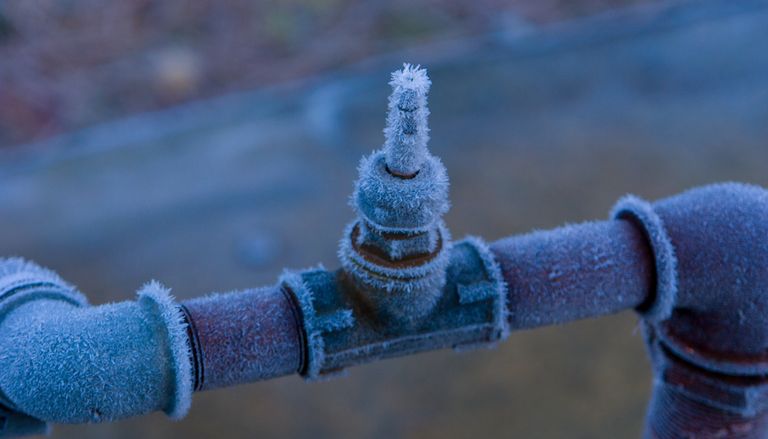Ways to Protect Pipes from Cold Weather: Professional Advice
Ways to Protect Pipes from Cold Weather: Professional Advice
Blog Article
Are you looking for answers on How to Prevent Your Pipes From Freezing?
:strip_icc()/snow-outdoor-faucet-pipes-4af65d1e5e904fb1aa7bf74071fe5d89.jpg)
Winter can ruin your pipes, particularly by freezing pipelines. Here's how to stop it from occurring and what to do if it does.
Intro
As temperatures decrease, the threat of icy pipelines increases, potentially bring about costly repairs and water damage. Recognizing exactly how to avoid icy pipes is vital for home owners in chilly environments.
Recognizing Frozen Pipes
What triggers pipes to freeze?
Pipes freeze when exposed to temperatures below 32 ° F (0 ° C) for extended periods. As water inside the pipes ices up, it expands, taxing the pipe walls and potentially creating them to break.
Threats and damages
Icy pipelines can cause water interruptions, residential or commercial property damage, and expensive repair services. Burst pipes can flood homes and cause substantial architectural damages.
Indications of Frozen Pipeline
Determining icy pipes early can avoid them from breaking.
How to identify frozen pipelines
Seek lowered water circulation from taps, unusual smells or noises from pipes, and visible frost on subjected pipes.
Prevention Tips
Insulating susceptible pipes
Wrap pipelines in insulation sleeves or use warm tape to safeguard them from freezing temperatures. Focus on pipelines in unheated or outside locations of the home.
Home heating methods
Keep indoor rooms properly heated, specifically locations with plumbing. Open up cabinet doors to enable cozy air to circulate around pipes under sinks.
Safeguarding Outdoor Pipes
Garden tubes and outside faucets
Separate and drain yard hoses prior to winter months. Install frost-proof faucets or cover outside faucets with protected caps.
What to Do If Your Pipelines Freeze
Immediate actions to take
If you believe frozen pipelines, maintain taps open to eliminate pressure as the ice thaws. Make use of a hairdryer or towels soaked in warm water to thaw pipelines slowly.
Long-Term Solutions
Architectural adjustments
Think about rerouting pipelines away from exterior walls or unheated locations. Include added insulation to attic rooms, basements, and crawl spaces.
Updating insulation
Buy high-grade insulation for pipelines, attic rooms, and walls. Appropriate insulation aids maintain consistent temperature levels and reduces the danger of frozen pipes.
Conclusion
Stopping frozen pipes calls for positive steps and quick feedbacks. By recognizing the causes, signs, and safety nets, home owners can safeguard their plumbing throughout winter.
6 Proven Ways to Prevent Frozen Pipes and Protect Your Home
Disconnect and Drain Garden Hoses
Before winter arrives, start by disconnecting your garden hoses and draining any remaining water. Close the shut-off valves that supply outdoor hose bibs and leave the outdoor faucet open to allow any residual water to drain. For extra protection, consider using faucet covers throughout the colder months. It’s also important to drain water from any sprinkler supply lines following the manufacturer’s directions.
Insulate Exposed Pipes
Insulating your pipes is an effective way to prevent freezing. Pipe insulation is readily available at home improvement stores and is relatively inexpensive. Pay close attention to pipes in unheated areas such as the attic, basement, crawl spaces, or garage. Apply foam insulation generously to create a buffer against the cold. You can also wrap your pipes in heat tape or thermostat-controlled heat cables for added warmth.
Seal Air Leaks
Inspect your home for any cracks or openings that could let in cold air. Seal any holes around the piping in interior or exterior walls, as well as the sill plates where your home rests on its foundation. Additionally, make sure to keep your garage door closed unless you’re entering or exiting. Leaving it open creates a significant air leak that can lead to frozen pipes.
Allow Warm Air Circulation
During cold snaps, it’s essential to allow warm air to circulate evenly throughout your home. Leave interior doors ajar to promote better airflow. Open kitchen and bathroom cabinets to help distribute heat consistently around the rooms. If you have small children or pets, be sure to remove any household chemicals or potentially harmful cleaners from open cabinets for safety.
Let Faucets Drip
A small trickle of water can make a big difference in preventing ice formation inside your pipes. When temperatures drop significantly, start a drip of water from all faucets served by exposed pipes. This continuous flow helps prevent the water from freezing. Additionally, running a few faucets slightly can relieve pressure inside the pipes, reducing the chances of a rupture if the water inside does freeze.
https://choateshvac.com/6-proven-ways-to-prevent-frozen-pipes-and-protect-your-home/

Do you like more info about 6 Ways to Prevent Frozen Pipes? Write feedback directly below. We would be happy to find out your insights about this entry. We are looking forward to see you back again later on. Please take a moment to promote this blog entry if you enjoyed reading it. Many thanks for going through it.
Book Your Service Report this page